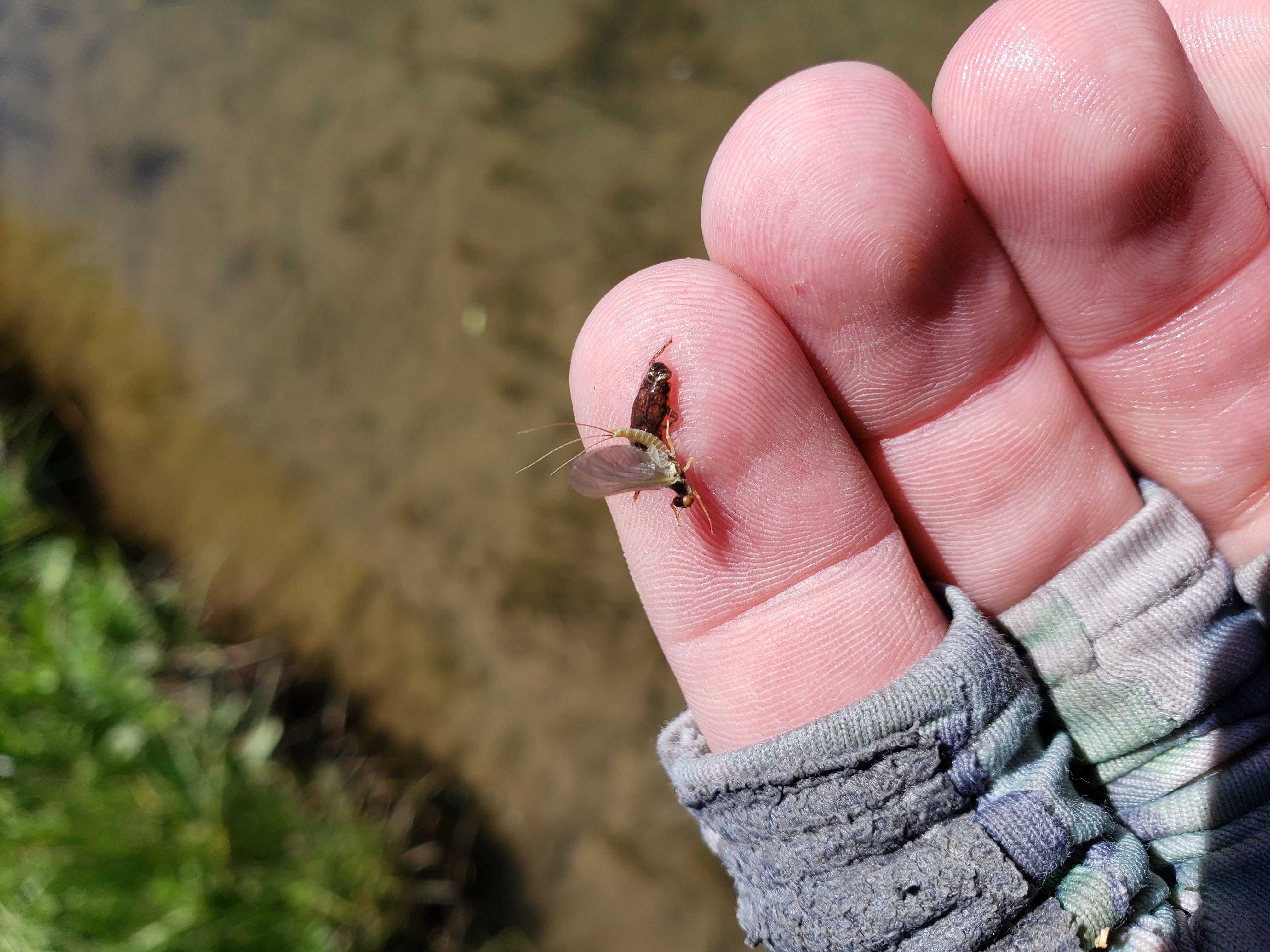Posted by Spencer on Jul 7th 2021
While only part of a trout’s diet, mayflies tend to command the attention of large trout and fly anglers. Of all the mayfly species, Pale Morning Duns, commonly referred to as PMDs, are some of the most consistent and reliable aquatic insects that hatch throughout the summer season.
PMDs are synonymous with fly fishing in the west. They can be found emerging from June through August (some years into September) on our favorite trout streams. Because of their longevity, this can be a rewarding
yet complex hatch to fish. Few other hatches offer the angler and fly tier the challenges of the PMDs.
Whether trying to find the stage of the hatch the fish are keyed into, matching the color of the naturals
to an artificial, or tying flies to match the size and silhouette of the naturals; PMDs are a favorite for
summer anglers, and the trout we pursue.
Emerging on the smallest spring creeks to the largest tailwaters, PMDs give the fly angler a chance to
fish the full aquatic lifecycle (nymphs, emerges, cripples, duns, and spinners). Multiple
variations/options during each stage of the lifecycle presents a different puzzle for the angler time and
time again.
While a pale-yellow body and dun colored wings are the classic pattern for PMDs, other color variations
will be present on different bodies of water. On some streams they have a pink abdomen and thorax,
other PMDs will have a pale green body. Not to mention the rusty color imitation, which should never
be left out of an angler’s fly box who plans on fishing this prolific hatch.

At certain times multiple color variations of PMDs can be found on the water simultaneously, and wary trout will exhibit
a particular preference for one color over the other making the puzzle all the more complex!
There are many ways to determine which fly to tie on. For PMDs size and silhouette are of the utmost
importance, thirdly color. With a wide variety of sizes ranging from 14 to 20, accurate selection can add
to the complexity of fishing PMDs.
When fishing a PMD in any phase of their lifecycle, having a fly that matches the silhouette of the
particular stage of development will greatly help in feeding a fish eating PMDs. Silhouette is also a part
of how the fly is floating. Whether a partially submerged dun or a dun that is floating high on the
surface, showing the fish the preferred silhouette will greatly improve your odds of feeding a wary trout.
The fish can get choosey on PMD’s. Not to mention colors. Trout can also decipher more colors on
cloudy days, and less on bright sunny ones. So knowing the weather before you pack your fly box can
help avoid frustration.

When observing a rising fish working a hatch of PMDs, time should be taken to watch and determine
what stage of the insect life cycle the fish is munching. Rise forms can tell us a lot about which stage the
trout are enjoying. Noses breaking the surface can be an indication of a fish eating duns or crippled
duns. A rise form that is soft and barley leaves a ring can be a good sign of a fish eating spinners. When
the trout's nose doesn’t break the surface, and only the top of a head is seen, it could likely be a fish
selecting emerging PMDs or ones that are stuck in their nymphal shuck.
One of my favorite parts of fishing PMDs are the spinner falls. On some days a hatch of PMDs
can be sparse, spread out over a 2 to 4 hour period, and fail to entice trout to rise. Each group of duns
that emerge throughout the day will mate and return to the water at the same time to perform
impressive spinner falls. PMDs deposit eggs from the surface of the water after 24 hours of being aerial.
The female spinners crash onto the surface, lay eggs, and rest on the water motionless. This incredible
event happens in the morning and evening when the temperature is comfortable, and wind is at a
minimum. Because these insects are dead or dying, a drag free drift is of the utmost importance.
Fish feeding on spinners in slightly riffled water will normally take a sheltered position tucked
behind or in-front of obstructions, letting the current bring them their meal. Whereas fish in wide flat
water can be seen cruising and eating on the move. In either situation, it pays to watch your target and
get as close as possible before trying to cast to them. When fishing for a cruising fish that is eating
spinners, watch the trout to find the route he’s on, then pick a spot to try and intercept it. That is the
best strategy I have found. Pinpoint accuracy, timing, and of course a little luck are all needed to feed a
cruising trout that is eating spinners.
From the large waters of the Henry’s Fork and Green River, to the small spring creeks like
Nelson’s and Armstrong, to our local favorites the Provo and Weber River, PMDs will be seen for the
next two to three months. Whatever stage of the life cycle the trout are keying on, PMDs offer a great
opportunity to fish all forms of a mayfly for the rest of the summer. Having a selection of silhouettes,
sizes, and colors in your box will help the fly fisher prevail in the sometimes puzzling exchange of
attempting to feed fish on PMDs. From nymph to emerges, cripples, duns and spinners-fish can be
found chowing these tasty little bugs until September. The hatch is just beginning to get started on our
local waters, so make sure you stop by the shop to get the bugs you need for chasing this incredible
hatch!

